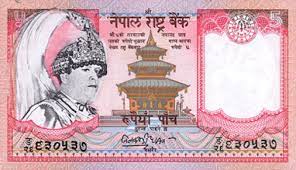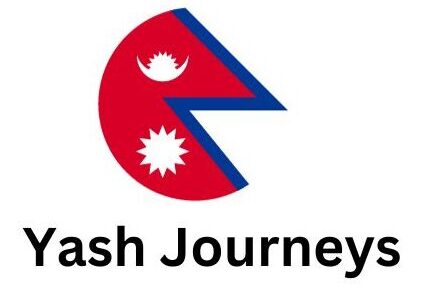Nepal, a beautiful and culturally rich country nestled in the Himalayas, has a currency that may intrigue you. Have you ever wondered what the currency in Nepal is? Well, look no further! In this article, we will explore the fascinating world of Nepalese currency, unveiling the banknotes and coins that are used in this enchanting land.
Get ready to be transported to Nepal as we delve into the currency that powers its vibrant economy and tells the tale of its rich heritage.
Currency in Nepal
Overview
Nepal, a beautiful country located in South Asia, has its own currency known as the Nepalese Rupee. This article will provide you with a comprehensive guide on the currency of Nepal, including its history, current notes and coins, exchange rates, and currency regulations. Whether you are planning a trip to Nepal or simply curious about its monetary system, this article will help you understand the significance and usage of the Nepalese Rupee.
History
The history of the currency in Nepal traces back to ancient times when various forms of trade and barter were prevalent. However, it was not until the mid-20th century that Nepal began issuing its own currency. Prior to that, the Indian Rupee was widely used in the country. In 1932, the Nepalese Rupee was officially introduced as the country’s currency, replacing silver coins that had been in circulation for centuries.
Current Currency
The official currency of Nepal is the Nepalese Rupee (NPR). It is denoted by the symbol “₨” and is subdivided into 100 paisa. The Nepalese Rupee is issued and regulated by the Nepal Rastra Bank, the central bank of the country. It is the sole authority responsible for maintaining the stability and integrity of the currency.
Nepalese Rupee
The Nepalese Rupee is a vibrant currency that reflects the rich cultural heritage and diversity of Nepal. The banknotes feature significant historical figures and iconic landmarks, showcasing the country’s proud heritage. The rupee comes in various denominations, including 1, 2, 5, 10, 20, 50, 100, 500, and 1000. Each note has its distinct color, size, and design, making it easy to differentiate between them.

Banknotes
The banknotes of Nepal are made of high-quality paper to ensure durability and security. They feature intricate designs, national emblems, and important figures from Nepal’s history. The 1000-rupee note, for example, showcases Mount Everest, the highest peak in the world, while the 500-rupee note portrays the Pashupatinath Temple, a significant religious site. These banknotes not only act as a means of exchange but also serve as a visual representation of Nepal’s cultural heritage.
Coins
In addition to banknotes, Nepal has a range of coins in circulation. The coins are available in denominations of 1, 2, 5, and 10 rupees. They are made of nickel, brass, or stainless steel, and each coin features the national emblem on one side. These coins are commonly used for smaller transactions and are an essential part of Nepal’s currency system.
Exchange Rate
The exchange rate of the Nepalese Rupee varies in relation to other major currencies. As a traveler or someone looking to convert currency, it is important to stay updated with the current exchange rates. Various exchange centers and banks throughout Nepal can assist you in converting your currency to Nepalese Rupees. Online currency converters and financial websites also provide real-time exchange rate information, making it easy for you to calculate the value of your currency in Nepalese Rupees.
Currency Conversion
If you are planning to visit Nepal and wondering how much your currency is worth, currency conversion is crucial. To convert your currency to Nepalese Rupees, simply multiply the amount by the current exchange rate. For example, if the exchange rate is 1 USD = 118 NPR, then 100 USD would be equivalent to 11,800 NPR. Ensure that you have a reasonable understanding of the exchange rate to avoid any confusion during your monetary transactions in Nepal.
Currency Regulations
Nepal has certain regulations regarding the import and export of currency. According to these regulations, you can import up to NPR 25,000 and export up to NPR 10,000 in Nepalese Rupees. You can also bring in foreign currency without any limitations, but the amount must be declared upon arrival. It is advisable to familiarize yourself with these regulations and consult the local authorities or your travel agent for the most up-to-date information before traveling to Nepal.
Accepted Currencies
While the official currency of Nepal is the Nepalese Rupee, various foreign currencies are widely accepted in major cities and tourist areas. The most commonly accepted foreign currencies include the US Dollar, the Euro, the British Pound, and the Indian Rupee. However, it is essential to note that smaller establishments, rural areas, or local markets may only accept Nepalese Rupees. Additionally, it is recommended to carry smaller denominations of foreign currency, as it may be difficult to receive change for large bills.
In conclusion, the currency in Nepal is the Nepalese Rupee, which holds significant cultural and historical value. Understanding the currency and its various facets, such as banknotes, coins, exchange rates, and regulations, will ensure a smooth and hassle-free experience during your time in Nepal. Whether you are exploring the picturesque landscapes or indulging in the vibrant culture, having a good grasp of the currency will enhance your overall journey in this enchanting country.
